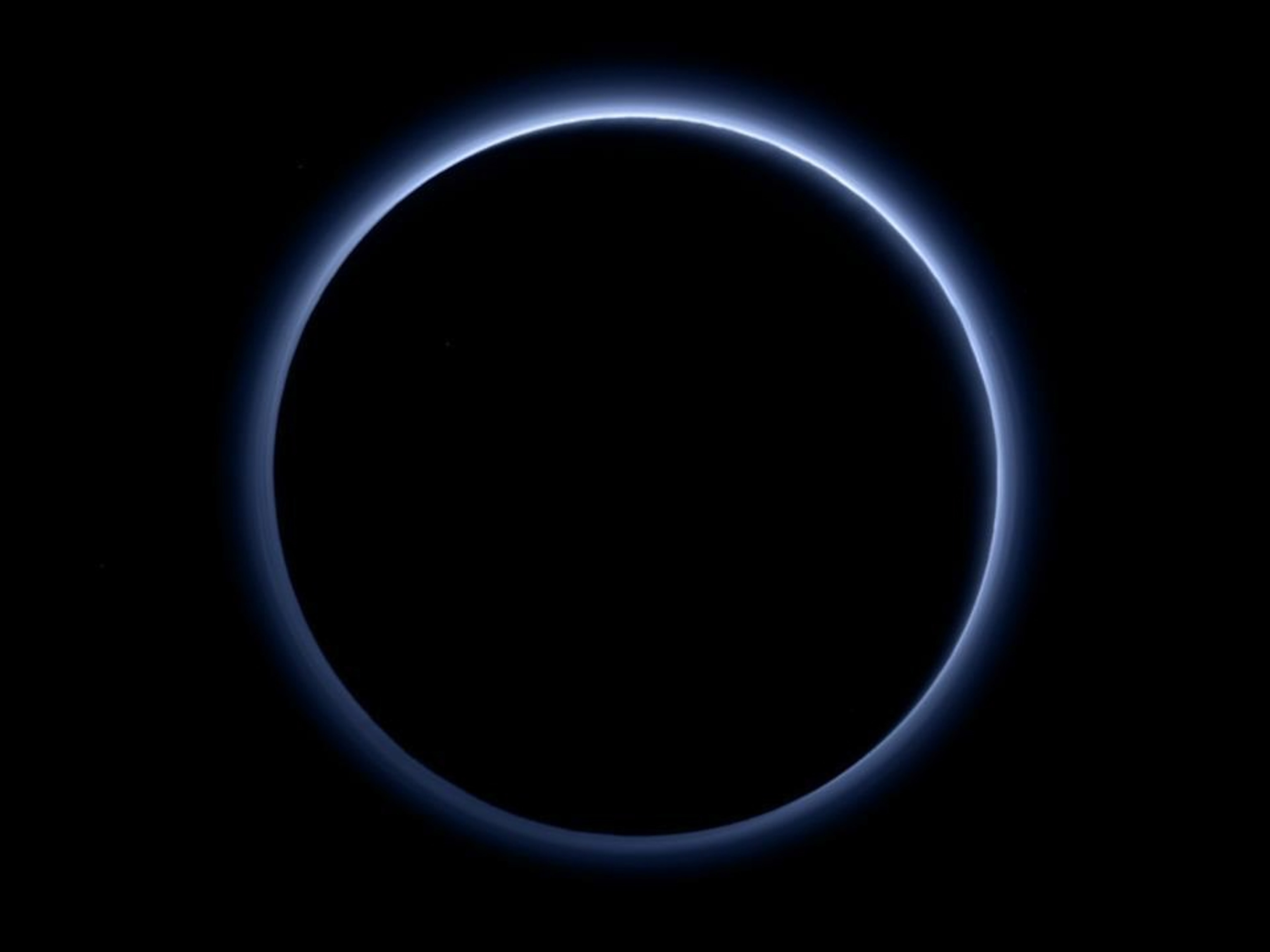Pluto’s Moons Dance to a Random Beat
Analysis of Hubble images reveals chaotic rotation of dwarf planet’s satellites.
Mischievous Pluto is again hurling mysteries at scientists. New observations based on years of Hubble Space Telescope data suggest that the dwarf planet’s four small known moons—Nix, Hydra, Kerberos and Styx—are behaving in bizarre, unpredictable ways, scientists report June 3 in Nature. The results paint a portrait of an incredibly complex gravitational dance, just weeks before NASA’s New Horizons spacecraft will fly within 6,500 miles of Pluto on July 14.
“It’s an amazingly fascinating system that New Horizons is about to enter,” says Mark Showalter of the SETI Institute.
Scientists don’t often get to make predictions with a guaranteed shelf life of only six weeks. Yet it was only after staring at a pile of Hubble images that Showalter could finally make sense of some puzzling observations. He’d been looking at how Nix and Hydra, the two largest of Pluto’s small moons, got darker and brighter as they traveled through their orbits. With the help of some new computer simulations, he realized that these two oblong moons were chaotically rotating—tumbling rather than spinning like tops.
“If you lived on Nix or Hydra, you would not know if the sun is coming up tomorrow,” Showalter says. “Or it could rise in the west and set in the north.”

Only one other moon, Saturn’s moon Hyperion, is known to perform such an off-kilter jig in space. In the Plutonian system, Nix and Hydra tumble about because they orbit both Pluto and its abnormally large moon Charon, which together form a gravitational dumbbell that tugs and nudges the moons in random ways. Styx and Kerberos also orbit the binary system formed by Pluto and Charon, so they are probably tumbling as well, Showalter says.
The Black Sheep
The Hubble data hint at even more weirdness in the system. It turns out that Kerberos, the minuscule (perhaps 19-mile-wide) moon that sits between Nix and Hydra, is much darker than its frosty siblings. “Kerberos is sort of like a charcoal briquette orbiting between two dirty snowballs,” Showalter says.
That’s a problem for theories describing how the Pluto system formed. Scientists think that billions of years ago, proto-Pluto collided with proto-Charon. Instead of being obliterated, the two bodies ended up locked in orbit with another, with the debris produced by the collision eventually forming the system’s smaller moons. This story works relatively well if the small moons are all relatively similar. But it’s a trickier sell if some of those moons are different from their siblings.
“What is it that could have happened to make one look different from the others? This happens in the solar system—obviously planets look very different—but here you have a system that seems like it’s a much more controlled environment,” says Andrew Youdin of the University of Arizona. “It’s harder to understand how you would get different colors.”
Given how bizarre the Plutonian family is turning out to be, is it possible that there are other dark and disorderly moons hiding out somewhere in the system? Showalter, along with the University of Maryland’s Doug Hamilton, determined that three of the known small moons are linked by a gravitational resonance, meaning that they orbit Pluto-Charon in lockstep. They’re about as tightly packed as moons can be—which, along with all the rotational chaos, suggests there aren’t many places where additional moons could hide and still be stable.
But Simon Porter, along with New Horizons principal investigator Alan Stern, published a paper on the arXiv in late May that described several regions where as-yet-undiscovered moons could survive. One of those is just inside the orbit of Styx, the innermost of the small satellites. Another is between Nix and Kerberos. A third lies along the same orbital paths traced by the smaller moons.
“So far we don’t see anything in the data that implies there’s a hidden, very large moon,” says Porter, of the Southwest Research Institute. “If there’s one extra in there it has to be very small— smaller than we can see with Hubble.”
As New Horizons zooms toward its rendezvous with Pluto, the most pressing reason to ferret out any hidden moons, no matter how small, is to avoid running into any dust those moons happen to be shedding. Even small debris—the size of a rice pellet —could be hazardous to the speeding spacecraft. So far, the coast looks clear.
Follow Nadia Drake on Twitter.





